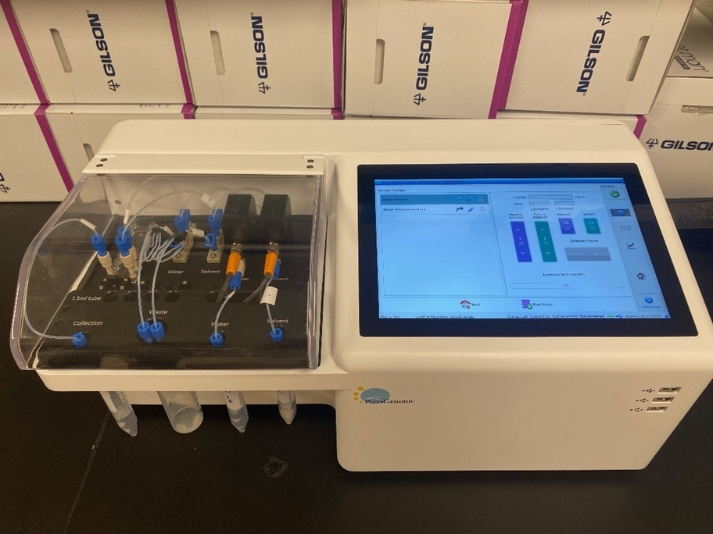NanoGenerator™ applies microfluidic approaches to synthesize nanoparticles (LNP, liposome, PLGA, etc.) in a continuous mode. NanoGenerator™ Flex-M system provides a wide throughput range from 1 to 12 mL, which meets a variety of applications from early screening to animal studies.
Lipid Nanoparticles (LNPs) are a class of nanoscale delivery systems designed to transport and protect therapeutic molecules, such as drugs and RNA, to specific target sites within the body. The basic structure of an LNP consists of a lipid bilayer surrounding a hydrophobic core. This structure allows the LNPs to encapsulate hydrophobic drugs or nucleic acids within the core while keeping the hydrophilic components on the surface, making them stable and compatible with the aqueous environment of the body.


Figure 1: Schematic of oligonucleotide based LNP synthesis
Training and Protocols
LNP/liposome preparation protocol with microfluidic mixing system:
- Dissolve nucleic acid samples in acidic aqueous buffer, such as sodium acetate buffer, citric acid buffer etc., in a clean DNase/RNase free 15mL tube. Dissolve lipid formulation mixture in anhydrous pure ethanol in another clean 15mL tube.
- Load the nucleic acid aqueous sample and lipid formulation to the corresponding reagent slots in Nanogenerator. Place a new tube for product collection.
- Enter LNP synthesis parameters, such as product volume, total flow rate (TFR) and flow rate ratio (FRR), in the touch screen user interphase of Nanogenerator.
- Press Run. The nucleic acid carrying LNPs are ready within minutes.
- Remove ethanol through dialysis or buffer exchange. The resulted LNP product is ready for downstream analysis and application.